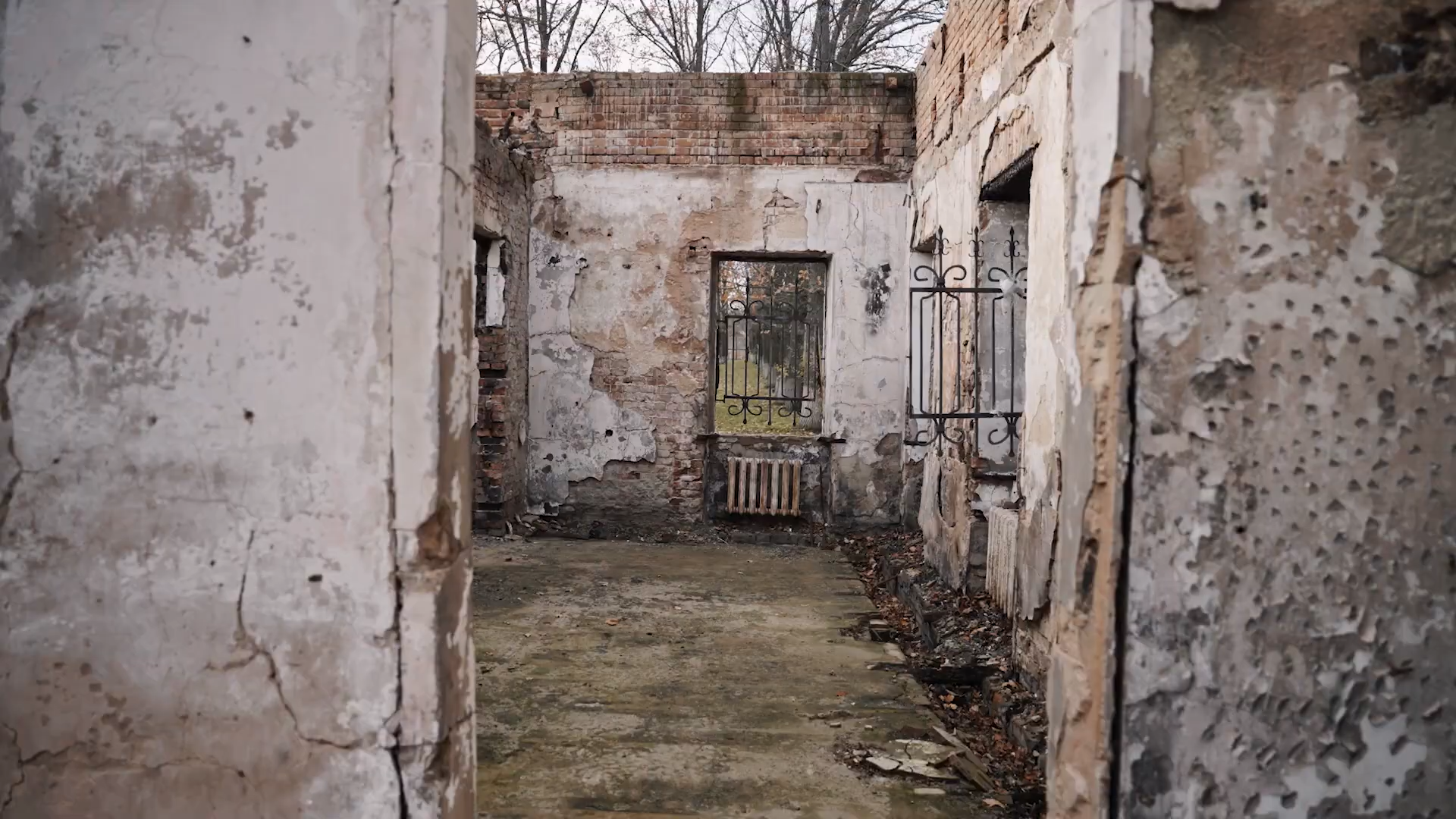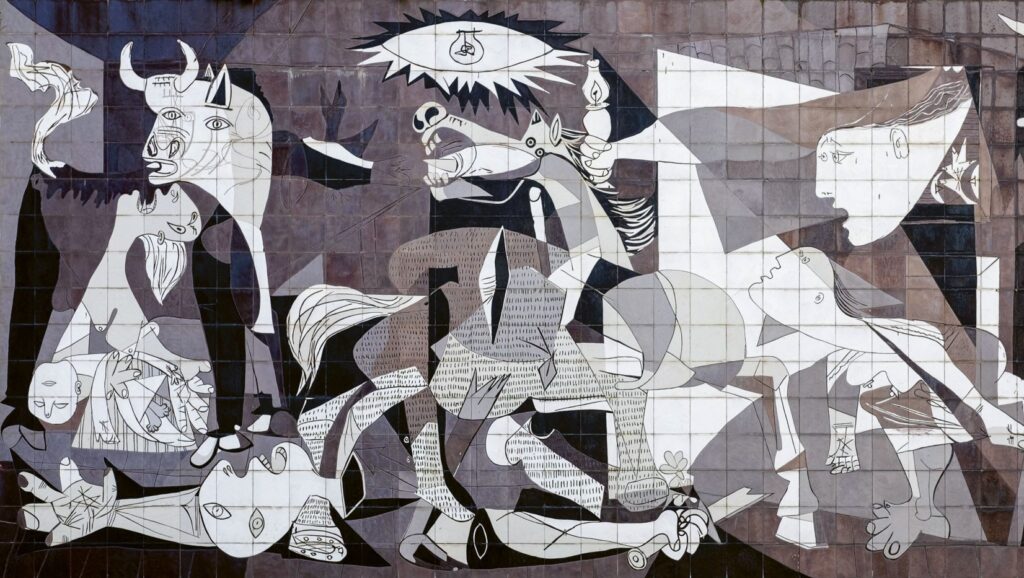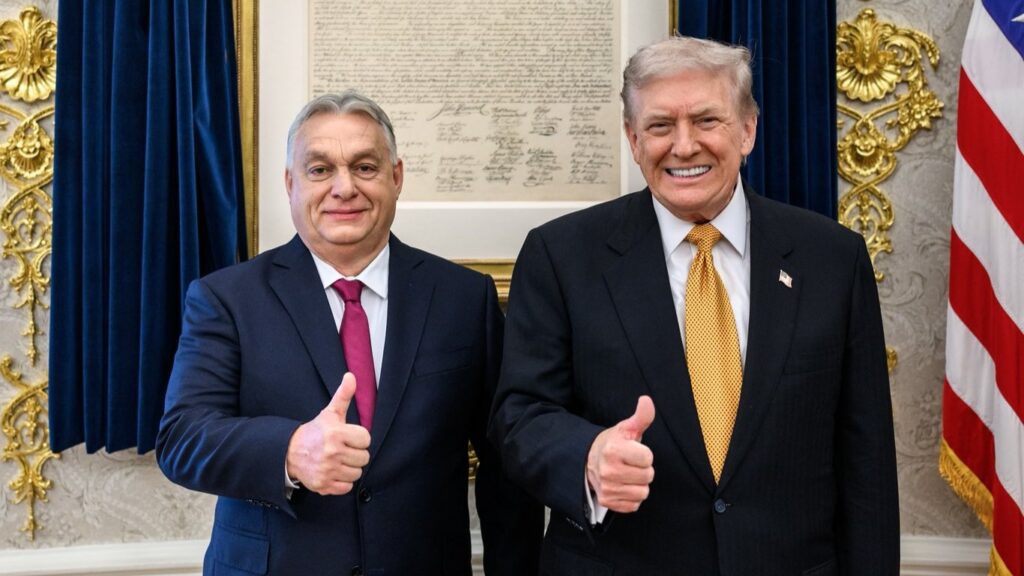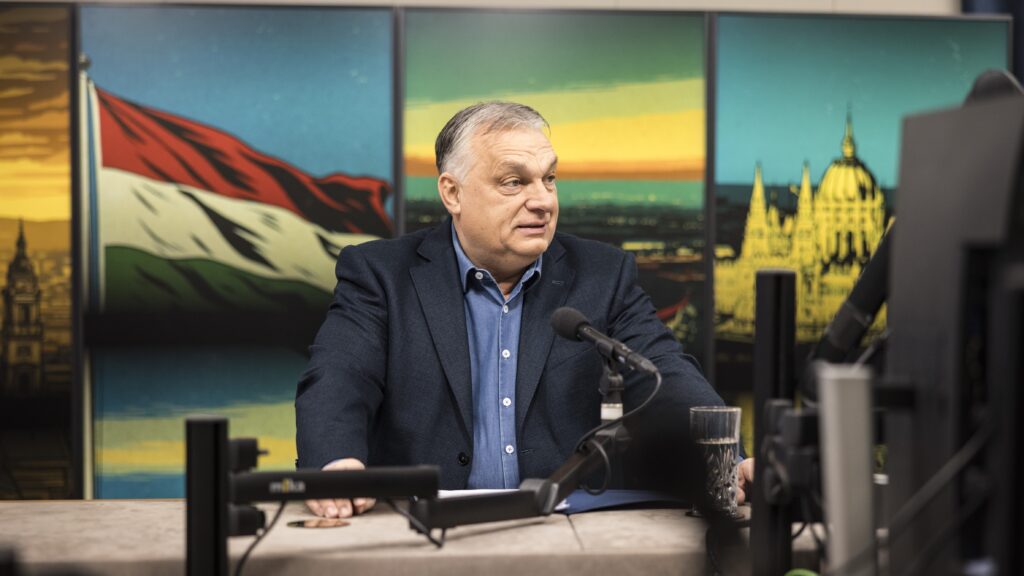On 26 September 2024 a screening of Erase the Nation (2023) was held at the Lónyay-Hatvany villa in the Buda Castle, under the patronage of the Danube Institute. Many came to watch (or some to re-watch) this daring documentary, which shows the destruction by the Russian Federation’s army of Ukraine’s cultural heritage since 24 February 2022. This valuable film owes its existence to a commission by the Polish National Institute of Cultural Heritage, within the framework of activities of the Support Centre for Culture in Ukraine. The documentary was financed with funding from the Polish Ministry of Culture and National Heritage.
Before the projection Tomasz Grzywaczewski, the war reporter who directed and starred in the film, gave a few introductory words about attacks on culture in the context of genocide. While methodical mass killings are the most spectacular aspect of genocide, those who seek to completely destroy a nation also come after art, artefacts and everything that attests to the existence of the targeted nation. One could say Tomasz insisted on the memocidal aspect of genocide: the elimination not only of the bodies the attacker seeks to destroy, but also of any material conducive to the ideas inhabiting the bodies the attacker seeks to annihilate.
The film opens with Tomasz’s programmatic promise: to record accurately the deliberate destruction of Ukrainian cultural monuments across cities such as Kyiv, Chernihiv and Kharkiv by the invading Russian forces. In one of the first scenes, Tomasz opens a case among ruins to discover a shattered violin. A little later, an interview with a Ukrainian soldier a mere two kilometres from the border, is concluded by that soldier producing a similar case, from which he draws his own well-kept and well-polished violin, playing a few notes from the Ukrainian anthem to keep up the morale of his fellow defenders.
‘Erase the Nation’ – documentary on the Russian crimes against Ukraine’s cultural heritage
Ukraine had over 5,000 museums, 65 historical-cultural reserves, and about 170,000 monuments before the war, including seven UNESCO World Heritage sites. During the nine months of the war, the Ministry of Culture and Information Policy of Ukraine registered over 800 instances of Ukraine’s cultural heritage destruction perpetrated by the Russian military forces.
Tomasz then interviews another Ukrainian, who drives him to the remains of a museum he frequented his entire youth. An elderly Ukrainian who keeps watch over the museum and carefully collects what he can from the rubbles manages to remain stoic as he guides his visitors through one among the many violated sanctuaries of Ukrainian culture; the driver, who cannot bear it, turns away from the camera to weep over his tattered youth. Elsewhere, a mother plays videos of her son, a talented folk dancer, who fell on the front and whose funeral she could not attend, as she could not his wedding, due to the Russian occupation.
Elsewhere yet, a child whose entire family lived for months on end in the basement of a school after their house was burned by Russian troops shows Tomasz the pastel graffiti painted on the walls by young children, as well as the Ukrainian anthem she scribbled there to cheer everyone up—and which the adults hid whenever the Russians checked on them, for fear that they might kill them all. In the tiny village of Skovorodynivka, in the Kharkiv region, Hanna Yarmish, who heads the educational department of the city’s museum, points to the statue of writer, composer and teacher Hryhorii Skovoroda as a symbol of the resilience of Ukrainian cultural icons.
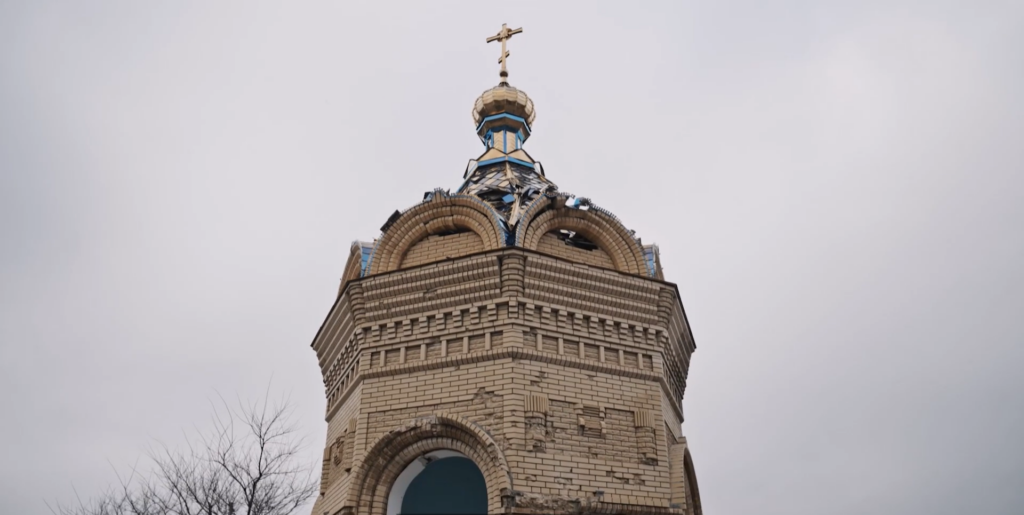
In the Q&A session that followed the screening of the film Tomasz had the opportunity to elaborate on his experiences.
Tomasz was first asked about how the situation had evolved, to his knowledge, since the filming of his documentary in late 2022. Although to be expected, the answer was no less bitter: the destruction has continued, more precious works of art and archaeological artefacts have been shattered, often under the pretext that the buildings inhabiting them are allegedly used as military bases by the defending Ukrainian army. Supposing a total Russian victory and absent such testimonies as those gathered in Erase the Nation, one is left to wonder what version of the truth about the Ukrainians’ responsibility in the extermination of their own culture would be remembered by the ages.
Tomasz was then asked about the contradictions in Russia’s attack on Ukrainian national and cultural identity. He elaborated on the paradoxes of the Russian government’s claims that Ukraine is an inalienable part of Russian history but that, at the same time, it has no individual existence, or only when it comes to snatching Crimea or the Donbas from it. Tomasz further elaborated on the suffering of Ukrainophones deported by Stalin at the beginning of the 1950s from the Carpathian Mountains into Southern Ukraine, specifically to the steppes near Odessa, where they are accused of being ‘banderists’ for speaking Ukrainian, as well as on the shame of Russophone Ukrainians, who declined interviews not to answer questions using the language of the invader.
Tomasz was finally asked about whether he felt that being a Pole, the Ukrainians told him or showed him things they would not have told or shown war reporters from other Western countries. Tomasz answered that on top of his personal linguistic ease in Ukraine, he also felt a particular kinship with the Ukrainians he met during the filming of Erase the Nation. He attributed this to their shared history of opposing Russian imperialism and to the shared experience of the perishability of national identity, rendering its fierce defence even more necessary in the face of aggression.
Pessimism was expressed by some on stage and in the public as to the outcome of the Russo–Ukrainian war. But as regards the cultural survival of Ukraine, one may find solace in the knowledge that however much destruction the country’s patrimony has yet to endure, an entire generation of Ukrainians has been invigorated to master its own culture. It would not be surprising for dozens of Ukrainian artists and writers to flourish in the coming decades. For the endurance of Ukrainian culture as well as for the endurance of the Ukrainian people, Ukraine is not yet lost—so long as they live.
Related articles:

